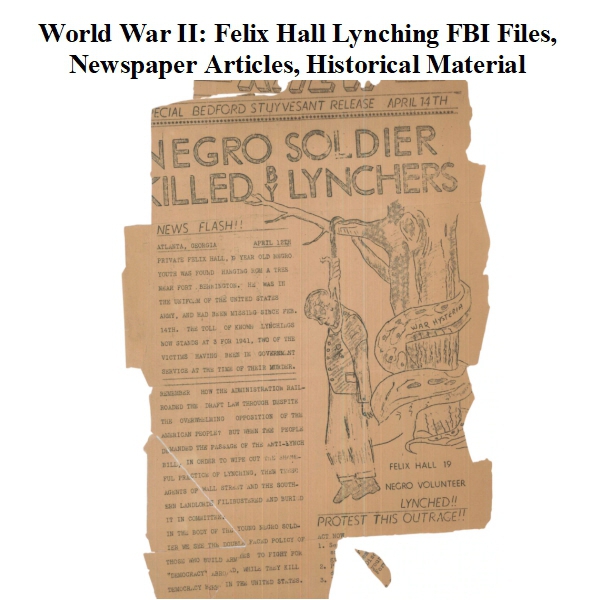
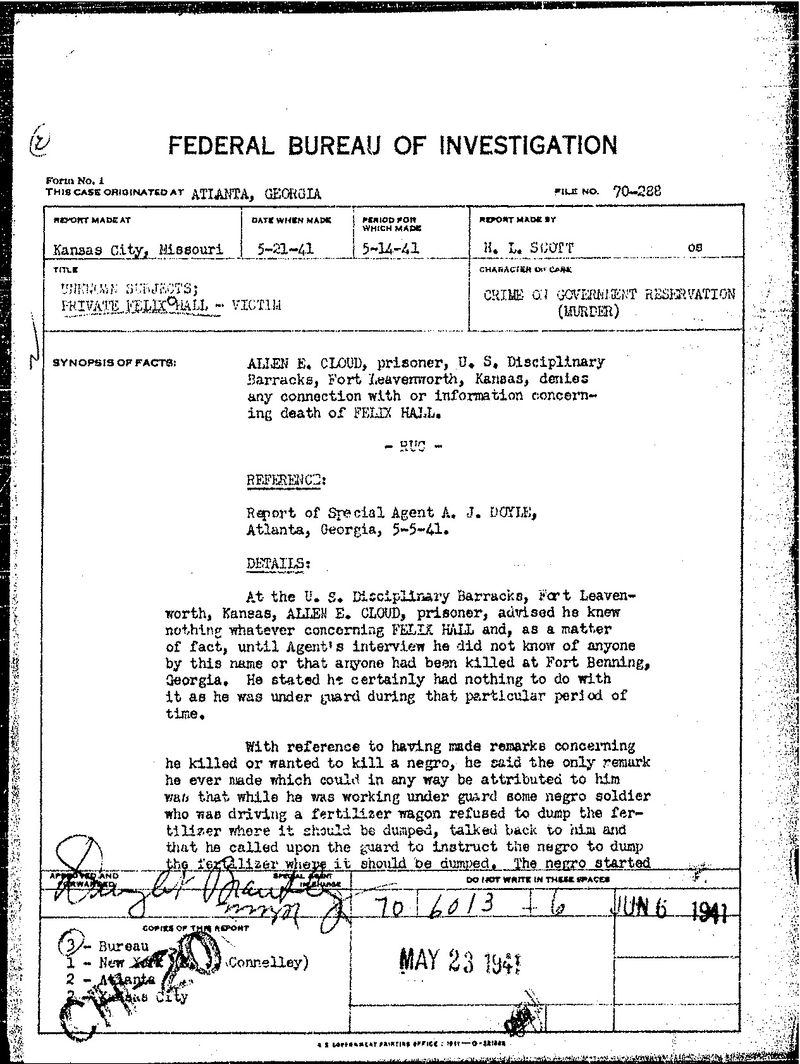

World War II: Felix Hall Lynching – FBI Files, Articles, Historical Records
$9.99
Description
This extensive collection—893 pages of FBI files, newspaper articles, and other historical documents—details the lynching of Private Felix Hall at Fort Benning, Georgia, in February 1941. The materials comprehensively chronicle a tragic event: the unsolved murder of a Black soldier on US military soil.
Private Hall, a Black soldier, was last seen alive on February 12, 1941. His subsequent disappearance led to his being officially declared a deserter a month later. However, the grim truth emerged on March 28th when his body, still in uniform, was discovered hanging from a tree near a training area at Fort Benning. This horrifying discovery marked the first known lynching to occur on a US military base.
Despite the gravity of the crime, those responsible for Hall’s death evaded justice. As journalist Alexa Mills highlighted in her 2016 Washington Post article, “The story of the only known lynching on a U.S. military base in American history,” both the FBI and the War Department significantly hampered the investigation by failing to diligently pursue, and in some instances, outright ignoring crucial evidence.
The FBI’s involvement, documented across 110 pages of case files, reveals a 17-month investigation that ultimately fell short. The files detail Hall’s last known movements: leaving his job at the Fort Benning sawmill on February 12th and intending to visit the base’s Black soldiers’ exchange. He was never seen again.
The FBI files also identify three potential suspects. The primary suspect, Henry J. Smith, a white foreman at the sawmill where Hall worked, is implicated by five Black soldiers who reported Smith’s death threat against Hall the day before his disappearance. This collection, therefore, offers a chilling account of a racially motivated murder and the systemic failures that allowed the perpetrators to escape accountability. The documents contain FBI interview notes regarding Sergeant Frank O. Williams, Hall’s training officer. Williams characterized Hall as a diligent and dedicated young man with an impeccable attendance record, never missing morning roll call. Furthermore, Williams reported having no knowledge of any past misconduct involving Hall, nor of anyone harboring animosity towards him.
The FBI’s assessment of the crime scene suggested the physical evidence—the victim’s positioning and the location of the body—indicated the crime was likely not the work of a single individual. This implies a complexity to the case beyond a lone perpetrator.
A significant portion of the collection consists of sixteen full pages of African-American newspapers from the years 1941 to 1945. These articles cover Hall’s death and reflect the anxieties prevalent within the Black community at the time. Many suspected that President Roosevelt’s administration was tolerating the continuation of segregationist practices, known as Jim Crow laws, within the military.
The collection also includes a 1994 republication of Ulysses Lee’s “The Employment of Negro Troops.” In the book’s introduction, Brigadier General Harold W. Nelson, head of Military History, praises Lee’s work as a definitive and unbiased account of the subject, written remarkably early, before the Civil Rights movement gained momentum in the 1960s, and yet remaining highly respected for its accuracy and impartiality even decades later. This highlights the enduring value and timeliness of Lee’s research, despite being written in a period preceding the widespread social changes of the later 20th century. The August 3rd, 2021, Fort Benning Electronic Press Kit contains a video recording of the dedication ceremony for the Felix Hall Historical Marker. This video documents the speeches given by Lieutenant General Theodore D. Martin and Congressman Sanford D. Bishop at the unveiling event. The press kit likely provides additional information about the marker itself, perhaps detailing its significance in Fort Benning’s history and the life of Felix Hall, the individual commemorated. The inclusion of a video suggests a desire to make the event accessible to a wider audience and to preserve a record of the speeches and the overall atmosphere of the ceremony. The presence of both a military leader and a congressman underscores the importance of the occasion, indicating a collaborative effort between the military and civilian sectors to honor Hall’s legacy. The electronic format of the press kit reflects modern methods of disseminating information and ensures wider distribution compared to a traditional printed press release.
Related products
-
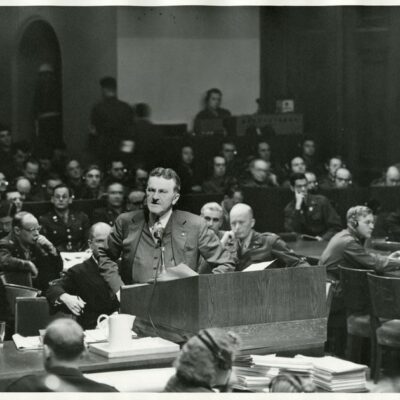
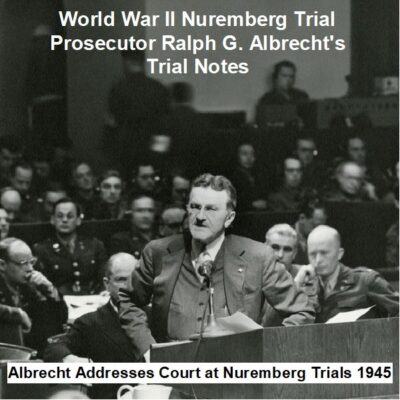
Trial Notes of Ralph G. Albrecht, Prosecutor at the Nuremberg Trials of World War II
$3.94 Add to Cart -
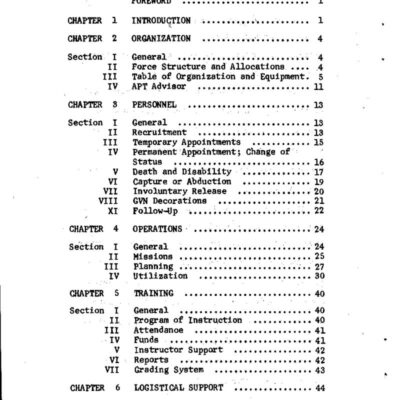
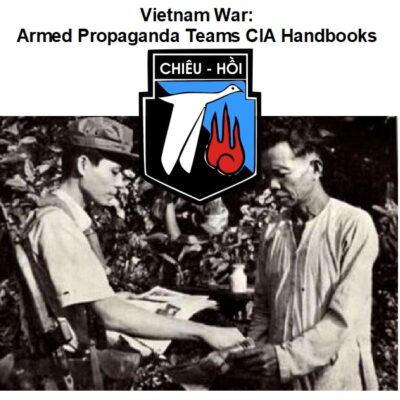
Vietnam War: Armed Propaganda Teams CIA Handbooks
$1.99 Add to Cart -
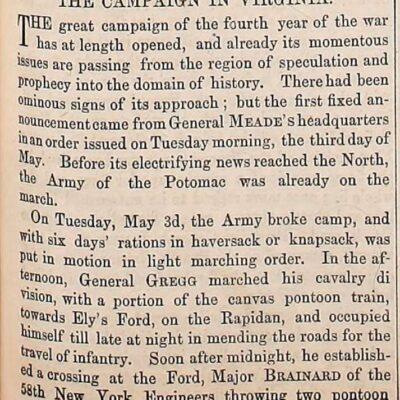
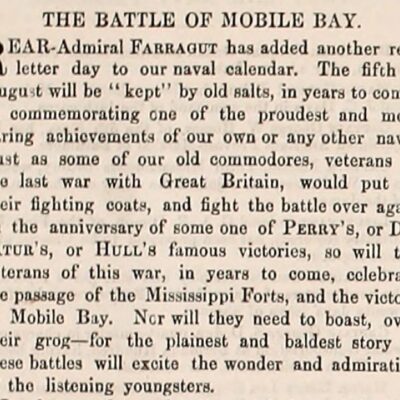
Civil War: Army Navy Journal & Gazette Volume 1 (1863 – 1864)
$19.50 Add to Cart -
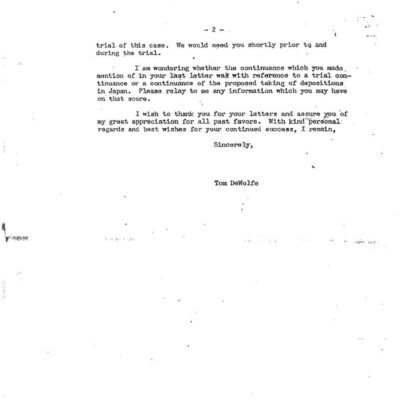
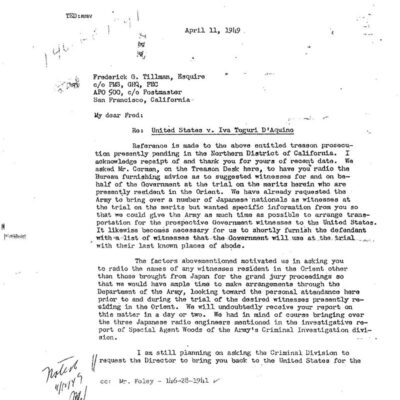
Tokyo Rose: Department of Justice Prosecution Files
$19.50 Add to Cart